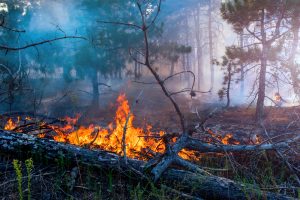
U.S. Rep. Greg Walden (R-OR) on Monday welcomed new U.S. Environmental Protection Agency (EPA) guidelines on prescribed fire.
“The EPA’s new guidelines are small steps in the right direction for forest management and reducing the risk of catastrophic wildfire,” Rep. Walden said on Aug. 12.
Prescribed fire is a tool used for reducing the risk of large summer forest fires. They are a low-intensity fire burned in the spring and fall that produces less smoke to help protect the health of people in nearby communities.
However, air quality regulations often impede the use of this tool, according to Rep. Walden’s office, which cited U.S. Forest Service data estimating that air quality rules in 2018 prevented almost 20 percent of acres planned for prescribed fire treatment in northeast Oregon.
The EPA on Aug. 8 issued new guidelines, “Exceptional Events Guidance: Prescribed Fire on Wildland that May Influence Ozone and Particulate Matter Concentrations,” that it says will provide more flexibility for implementing prescribed fires in forest management.
“We know prescribed fire is one tool in the toolbox for improving forest health and reducing the risk of larger, more dangerous wildfires that pour smoke into our communities,” said Rep. Walden. “There is still lots of work to be done when it comes to forest management, but this is a welcomed piece of the puzzle.”
Rep. Walden pointed out that prescribed fire is only effective if it follows “sensible thinning and harvest projects,” a provision he has included in the Resilient Federal Forests Act of 2019, H.R. 2607, which he introduced in May with 23 other members, including U.S. Reps. Paul Cook (R-CA), Glenn “GT” Thompson (R-PA), Cathy McMorris Rodgers (R-WA), and bill sponsor Bruce Westerman (R-AR) to improve forest management on national forest lands.



